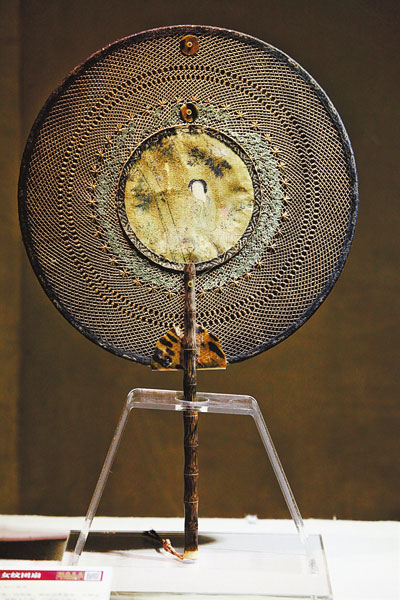
Cao Zhen
caozhen0806@126.com
MORE than 80 handmade fans exported from Guangdong Province to Europe during the Qing Dynasty (1644-1911) are on display at the Shenzhen Museum on Tongxin Road, presenting a fascinating historical review of East-West interaction.
The fans, made from ivory, hawksbill, silk, enamel, feathers and sandalwood, were provided by a Shenzhen private collector who bought the items in France, Britain, Germany, Belgium and Italy from local collectors.
The exhibits are folding fans and moon-shaped fans richly decorated with painted scenes or embroidery. During the Qing Dynasty, fans were no longer purely used for the practical purpose of keeping cool, they had attained an artistic and social status among the wealthy and court elite.
The folding fans are made of curved sticks conjoined and fastened at a base, with both sides identical, and spread open to reveal a panel depicting a continuous scene of figures pursuing leisurely activities. They are flanked by another two smaller figurative panels enwreathed within auspicious Buddhist symbols and flower scrolls, some painted in gold. Since each fan used to be kept in exquisite lacquer boxes, all the exhibited fans are still in excellent condition.
“These pieces of art reflect China’s aesthetics and were once fashionable in the West. Some also have European artistic characteristics because European dealers commissioned them,” said Huang Yangxing, a researcher at the Shenzhen Museum.
“Fans reached their peak of popularity during the Qing Dynasty with the rising demand from Europe. As an industry developed around the handmade fans, artists explored more creative ways, such as using enamel or gold embellishments, to increase their commercial value,” Huang explained.
Guangdong was an important hub for China’s overseas trade during the 17th and 18th centuries, with the first British trading post established in Guangdong in 1699, which formed a trade route to take Chinese exports, such as fans and porcelains, to the West.
Dates: Until March 22
Hours: 9 a.m.-5 p.m. Closed Mondays
Venue: Shenzhen Museum, 6 Tongxin Road, Futian District
(福田区同心路6号深圳博物馆老馆)
Metro: Luobao or Shekou Line, Grand Theater Station (大剧院站), Exit B
|

